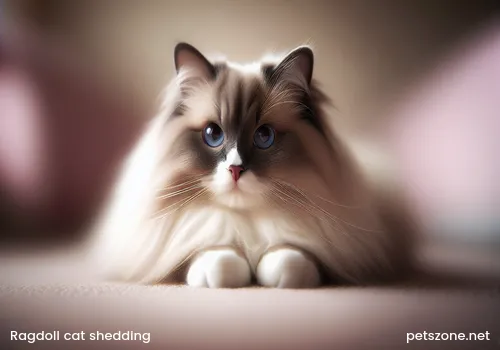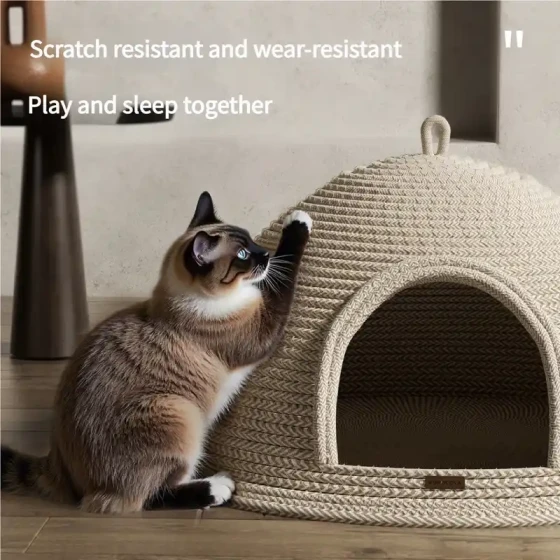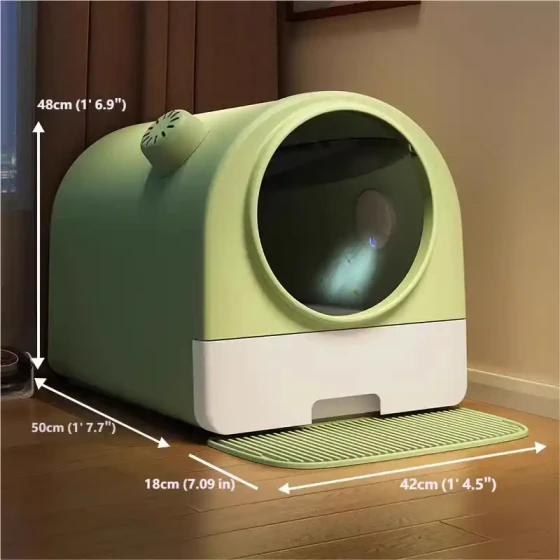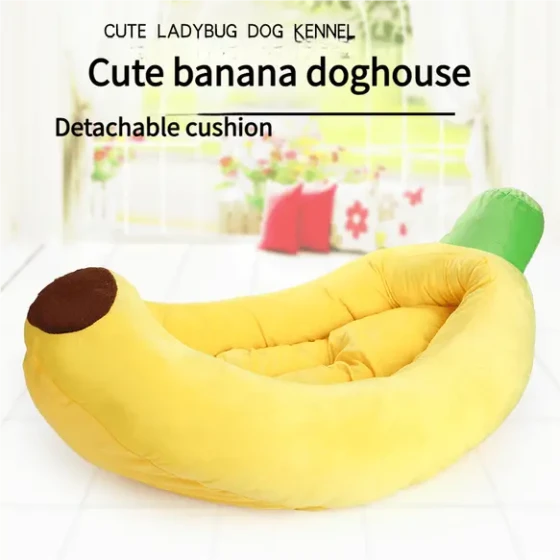Is Ragdoll Cat Shedding Severe_Ragdoll Cat Shedding Characteristics and Effective Coping Methods
Ragdoll cat shedding is their normal physiological phenomenon, but compared with some short-haired cats, Ragdolls, due to their double-layer medium-long fur, have more noticeable shedding, especially during molting seasons. However, as long as the correct care methods are mastered, the shedding problem of Ragdolls can be effectively managed, keeping the home tidy and allowing the cat to have smooth “divine hair.”

Known as the "Ragdoll Fairy" for their beauty in the cat world, Ragdolls have won countless cat owners’ love with their fluffy soft fur, gentle temperament, and deep blue eyes. However, having such a gorgeous “coat” also means they require more grooming and care. Many new cat owners may worry whether Ragdolls will “shed to baldness” or if the home will become a “hairy house.” In fact, understanding the shedding characteristics of Ragdolls and adopting scientific countermeasures can easily solve these concerns.
Ragdoll Cat Shedding Characteristics: The "Sweet Burden" Under the Gorgeous Appearance
The fur structure of Ragdolls is relatively special; they have a medium-long double-layer coat, with a soft silky outer coat and a dense undercoat. This structure gives Ragdolls an extremely fluffy and soft touch but also means their shedding amount is more than short-haired cats.
- Seasonal Molting: Just as our wardrobe changes with the seasons, Ragdolls also have distinct seasonal molting, especially in spring and autumn. In spring, they shed thick winter fur to prepare for summer; in autumn, they grow denser winter fur to resist the cold. During these two periods, you will find the cat’s shedding significantly increases, and “cat hair flying everywhere” on the sofa and floor is common.
- Daily Shedding: Besides seasonal molting, Ragdolls also have normal daily physiological shedding, which is for metabolism, allowing new hair to replace old hair. However, the daily shedding amount is relatively low and does not cause much trouble if groomed regularly.
- Visual Effect Caused by Fur Characteristics: Ragdolls have long and light fur that easily floats in the air after falling off and then sticks to clothes or furniture surfaces. This makes their shedding appear more “noticeable” than the actual amount, giving an illusion of “severe shedding.”
Why Do Ragdoll Cats Shed? Exploring the "Shedding Mystery"
To tackle shedding, it is necessary to understand its causes. Besides normal physiological factors, Ragdoll shedding can also be affected by various external factors and health conditions.
- Physiological Shedding:
- Seasonal Molting: As mentioned earlier, this is the main cause.
- Cat Age: The hair growth cycle of kittens and elderly cats may differ, affecting shedding.
- Hormone Levels: Unspayed female cats may temporarily shed more during estrus or pregnancy/lactation due to hormonal changes.
- Unbalanced Nutrition:
- Protein Deficiency: Protein is the main component of hair; insufficient protein in cat food makes hair fragile and prone to breakage, increasing shedding.
- Fatty Acid Deficiency: Unsaturated fatty acids like Omega-3 and Omega-6 are crucial for skin health and hair gloss. Lack of these can cause dry, itchy skin, leading to shedding.
- Vitamin and Mineral Deficiency: B vitamins, zinc, etc., are important for hair growth.
- Skin Diseases and Parasites:
- Fungal Skin Infection (Ringworm): Causes localized shedding along with red patches and scales on the skin.
- External Parasites (Fleas, Mites): Cause severe itching, and excessive scratching or licking leads to shedding.
- Allergic Dermatitis: Allergies to food or environment can also cause skin inflammation and shedding.
- Stress and Environmental Changes:
- Environmental Changes: Moving home or family member changes can cause stress, which affects the immune system and hair health.
- Excessive Cleaning: Frequent baths or using unsuitable shampoos can damage the natural protective layer of the skin, causing dryness and shedding.
- Disease Factors:
- Endocrine Diseases: Such as hyperthyroidism or hypothyroidism may cause systemic shedding.
- Kidney or Liver Diseases: Some chronic illnesses also reflect on hair health.
- Tumors: In rare cases, abnormal hair loss may relate to tumors.
Effective Ways to Cope with Ragdoll Cat Shedding: Say Goodbye to "Cat Hair Flying Everywhere"
Although Ragdoll shedding is inevitable, through scientific care and management, we can minimize shedding and keep the cat’s fur healthy and beautiful.
1. Daily Grooming: The "Top Priority" to Manage Shedding
This is the most direct and effective method to cope with Ragdoll shedding.
- Frequency: In non-molting periods, it is recommended to groom at least once daily for 10-15 minutes each time. During peak molting, grooming 2-3 times daily may be needed. Consistent daily grooming can effectively remove dead hair, prevent matting, and promote blood circulation in the skin for healthier new hair growth.
- Tool Selection:
- Pin Brush (Slicker Brush): Used for daily grooming; it can effectively detangle and remove loose hair. Choose brushes with rounded pins to avoid scratching the cat’s skin.
- Mat Breaker (Dematting Comb): For severe mats, but use cautiously to avoid pulling the cat’s fur painfully.
- De-shedding Tool (e.g., Furminator): Can reach deep into the undercoat to remove dead fur and reduce shedding. Use only 1-2 times per week, as overuse may damage hair follicles.
- Grooming Techniques:
- Start from the head, combing in the direction of hair growth; first comb the back and sides, then the belly and legs.
- Be patient and meticulous on long-haired parts (such as tail, neck, and "pants") ensuring every inch is groomed.
- Groom gently to avoid pulling the cat’s hair and let them enjoy the process.
2. Diet Management: Nourishment from "Stomach" to "Fur"
A healthy diet is the foundation of hair health.
- High-Quality Cat Food: Choose complete cat food with high protein and balanced nutrition. Quality animal protein is the main raw material for hair growth.
- Supplement Unsaturated Fatty Acids: Add appropriate fish oils (salmon oil, krill oil, etc.) or cat-specific seaweed powder to the daily diet. Fish oil is rich in Omega-3 fatty acids, helping to improve dry skin, make fur glossier and smoother, and reduce shedding.
- Adequate Water Intake: Ensure cats always have fresh drinking water. Sufficient hydration helps maintain skin and fur health.
3. Environmental Control: Create a Comfortable "Little Nest"
- Appropriate Temperature and Humidity: Keep indoor temperature stable, avoiding overheating or overcooling. Suitable humidity (usually 50%-60%) helps prevent dry skin and shedding caused by skin problems.
- Regular Cleaning: Clean the cat’s living area regularly, including cat beds and scratching posts, reducing hair and dust buildup and lowering parasite growth.
4. Regular Baths: Moderate Cleaning, Not Overcleaning
- Bathing Frequency: Ragdolls do not need frequent baths, typically once every 2-3 months unless very dirty. Too frequent bathing destroys the skin’s natural oils, causing dryness and shedding.
- Choose Cat-Specific Bath Products: Always use cat shampoo that is mild, non-irritating, and nourishing. Rinse thoroughly to avoid residue.
5. Regular Check-ups: Rule Out Potential Health Problems
- At least one veterinary check-up a year: Regular check-ups can detect and treat potential diseases early, such as skin diseases, endocrine disorders, or parasite infections. If abnormal shedding occurs with skin redness, itching, lethargy, or poor appetite, seek veterinary care immediately.
Avoiding the Threat of "Hairball Syndrome": Grooming is More than Aesthetic
When Ragdolls lick themselves to clean, they swallow large amounts of shed hair. Over time, this hair accumulates into “hairballs” in the stomach. "Hairball syndrome" is a common health issue in long-haired cats and can lead to vomiting, poor appetite, or even intestinal blockage in severe cases.
Consistent daily grooming is the most effective prevention for hairball syndrome. Grooming removes most dead hair, reducing the amount swallowed by the cat. Additionally, feeding hairball paste or cat grass regularly helps cats expel hairballs better.
Frequently Asked Questions
Q1: Do Ragdolls not shed?
A1: This is a common misconception. Ragdolls, like all cats, do shed. Their long fur makes shedding more noticeable, creating an illusion of “heavy shedding.” No cat is completely non-shedding.
Q2: When is Ragdoll shedding the worst?
A2: Shedding is usually heaviest during spring and autumn molting periods. Temperature rises in spring cause them to shed winter’s thick fur; in autumn, they shed to grow warmer winter fur. During these times, shedding significantly increases.
Q3: What can Ragdolls eat to improve shedding?
A3: To improve fur health and reduce shedding, add fish oil (such as salmon oil), rich in Omega-3 fatty acids, to their diet. Cat-specific seaweed powder or lecithin can also benefit fur health. However, supplements should be used under veterinary guidance.
Q4: How to judge if Ragdoll shedding is normal?
A4: Normal shedding shows:
* Shedding amount consistent with seasonal molting.
* Shed hairs are complete without follicle shrinkage.
* Skin is free of redness, scaling, or scabs.
* The cat is energetic with normal appetite and excretion.
If there is localized heavy shedding, red itchy skin, lethargy, or loss of appetite, it may be disease-related and requires prompt veterinary attention.
Summary
Ragdoll shedding is an inherent characteristic of long-haired cats, not a “disaster.” As cat owners, with patience and careful daily grooming, a balanced diet, a suitable living environment, and regular health checks, shedding can be effectively managed. Enjoy the “beauty hit” and gentle companionship that Ragdolls bring, while providing them with meticulous care and professional grooming to keep their healthy and gorgeous “fairy style” forever!
References:
* Cat Fanciers’ Association (CFA) descriptions and care advice about Ragdolls.
* American Veterinary Medical Association (AVMA) articles on cat skin and fur health.
* Expert pet care and veterinary blogs’ professional advice on grooming long-haired cats.



-560x560.webp)